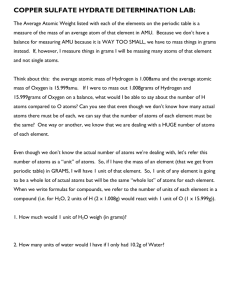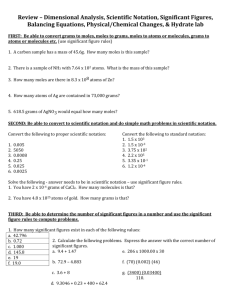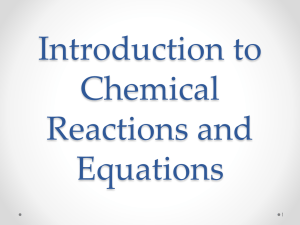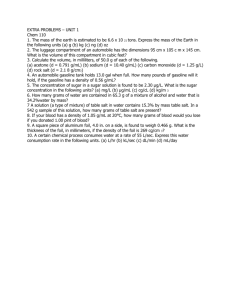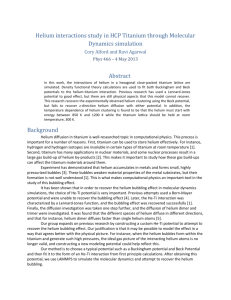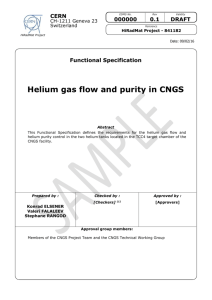Matter test study guide An artist heats a solid copper rod and bends
advertisement
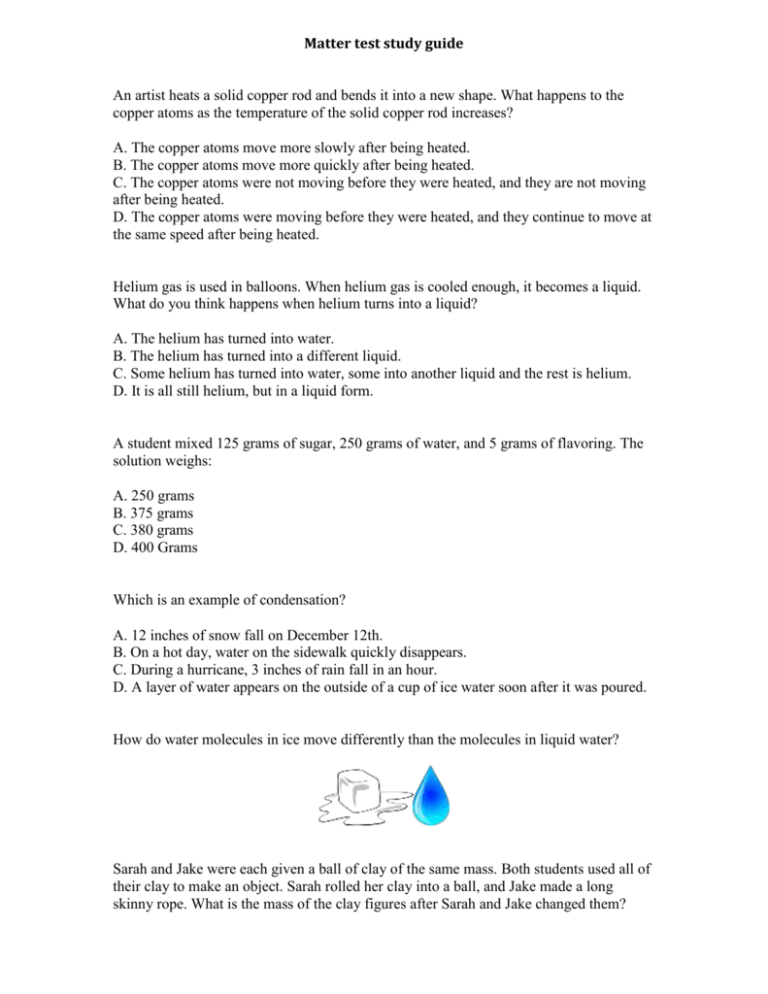
Matter test study guide An artist heats a solid copper rod and bends it into a new shape. What happens to the copper atoms as the temperature of the solid copper rod increases? A. The copper atoms move more slowly after being heated. B. The copper atoms move more quickly after being heated. C. The copper atoms were not moving before they were heated, and they are not moving after being heated. D. The copper atoms were moving before they were heated, and they continue to move at the same speed after being heated. Helium gas is used in balloons. When helium gas is cooled enough, it becomes a liquid. What do you think happens when helium turns into a liquid? A. The helium has turned into water. B. The helium has turned into a different liquid. C. Some helium has turned into water, some into another liquid and the rest is helium. D. It is all still helium, but in a liquid form. A student mixed 125 grams of sugar, 250 grams of water, and 5 grams of flavoring. The solution weighs: A. 250 grams B. 375 grams C. 380 grams D. 400 Grams Which is an example of condensation? A. 12 inches of snow fall on December 12th. B. On a hot day, water on the sidewalk quickly disappears. C. During a hurricane, 3 inches of rain fall in an hour. D. A layer of water appears on the outside of a cup of ice water soon after it was poured. How do water molecules in ice move differently than the molecules in liquid water? Sarah and Jake were each given a ball of clay of the same mass. Both students used all of their clay to make an object. Sarah rolled her clay into a ball, and Jake made a long skinny rope. What is the mass of the clay figures after Sarah and Jake changed them? Choose 3 phase changes below, and give an example of each. Cross out the ones you don’t use. Phase Change Vocabulary word that means the Example phase change listed on the left Solid to Liquid Solid to Gas Liquid to Solid Liquid to Gas Gas to Solid Gas to Liquid Ice melting into water takes/ releases (circle one) energy. Why? Compare the densities of “SCIENCE COINS” to the densities of known metals. Use the information to determine what the coins are mostly made of. Density = mass / volume (Density = mass divided by volume) ● What is each coin made of, and how do you know? SHOW YOUR WORK! Coins Mass (g) Volume (ml) Butterfly 4.5 g 0.5 ml Fish 12.0 g 4 ml Lizard 10.5 g 0.5 ml ● Using the particle model, draw a picture of the differences between the densities of the fish coin and the lizard coin. How are the particles arranged in each of the coins? Density of Known Metals: Metal Density (g/ml) Aluminum 3.0 g/ml Nickel 9.0 g/ml Silver 11.0 g/ml Gold 19.0 g/ml Iron 8.0 g/ml Platinum 21.0 g/ml How would you know that a certain liquid was actually a melted solid of the same substance? When wood burns, a small amount of ash is made. Why is the mass of the wood before the fire not equal to the mass of the ash after the reaction? Keeping in mind the particle model of matter, explain what is happening to the air and water particles between 1 am and 6pm on the graphs. A student fills a beaker with 50 ml of cold water and another beaker with 50 ml of hot water. The student then adds 1 drop of food coloring to each beaker. How do the particles of hot water and cold water interact with the particles of food coloring and WHY? (Remember, the hot and cold water are in their own beakers) You are given a beaker with salt and water. There is already some salt dissolved in the beaker, you continue to add salt, but at a certain point the salt stops dissolving. WHY has the salt stopped dissolving? Draw and/or explain your answer in the box below. How does the conservation of mass apply to CHEMICAL REACTIONS? For example: 2 H2 + O2 → 2H2O What is the relationship between heat and motion of particles in the water cycle? Can you use the particle theory to describe the water cycle?


